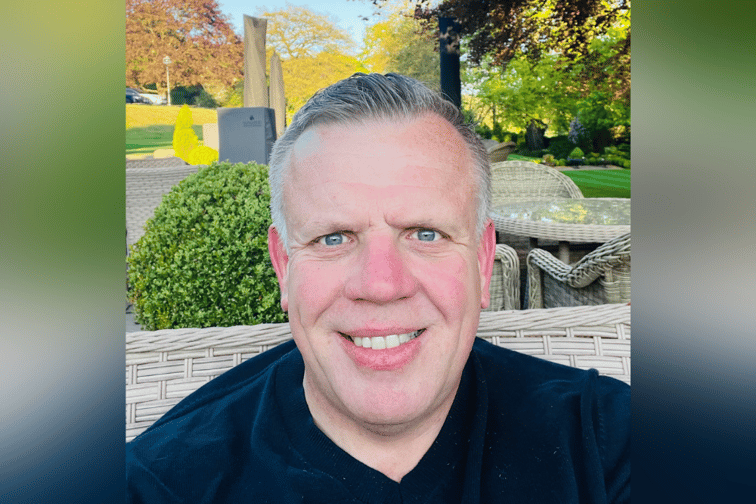

It was only relatively recently that Paul Williamson (pictured) heard a client use a phrase that epitomises what he has spent his 25-year marketing career teaching businesses of every shape and size – how to avoid “sad trombone syndrome”.
“So, that’s where you’ve seen some marketing and you’ve gone through the journey and your journey wasn’t very happy so you go [insert desolate trombone noise here],” he said. “And that just sums up what I’ve always championed – that the journey to the endpoint is just as important as the endpoint itself. That it’s about taking people with you all the way and making them enthused about your offering - and avoiding sad trombone syndrome.”
Since the early doors of his marketing career, Williamson has worked with a vast range of clients, managing rebrands, restructuring campaigns and championing the critical need to integrate marketing and communication channels into the very DNA of a business. As MD of Realia Marketing for the last 17 years, he said, he has seen the marketing space through multiple evolutions and is seeing first-hand the need for insurance businesses to generate more holistic overviews of their clients.
Shifts in customer expectations and requirements alongside the regulatory changes introduced by the FCA’s updated pricing practices have rendered many traditional acquisition-led marketing devices largely obsolete. Insurance was hardly the only profession to use such techniques, Williamson said, but the upshot of campaigns targeted at acquisition is the chipping away of consumer loyalty and high levels of attrition.
“Because [customers feel] if you’re not going to look after me, why should I look after you?” he said. “And the cost of acquisition is extraordinarily high. Often, if an insurance company has to pay out on a claim in the first year or two years, then that customer never becomes profitable. By spending huge amounts of money and effort on acquiring new customers, we can sometimes forget how we got to where we are and forget the people who got us there.
“The [marketing] agency model and the insurance model are very similar, we can get so focused on filling the top of the bucket and looking at those numbers, that while we do notice the attrition rate, as long as we’re continuing to fill in the top, we think that’s OK.”
It’s a way of operating that Williamson has seen change in recent years, particularly since the upheaval represented by aggregator sites. When those came into play, he said, insurance businesses were either part of that party or they weren’t, with some of those that weren’t falling into the trap of simply pitching themselves as cheaper than the aggregator. He believes that approach is a race to the bottom, as if all you can compete on is price then you’re stuck in a vicious circle of ever diminishing returns.
“And actually, we have to be able to compete on value if we want to be a sustainable business in a sustainable industry,” he said. “My favourite analogy is that when you put your old settee on the front lawn saying ‘Free to collect’, it doesn’t go anywhere. You then put a sign on it saying ‘For Sale - £500’ and somebody steals it because suddenly it has got value.
“The challenge for the supply chain into insurance companies and the challenge for insurance companies into end-user policyholders is how do you continuously reinforce the value that you bring? How do you continuously demonstrate that actually, we are looking out for you, we are thinking about you, we are acting in your best interest?”
On the B2C level it’s a real challenge for larger insurers that may have millions of policyholders, he said, while on the broker side of the equation, where points of differentiation are quite difficult to achieve, it all comes down to relationships. Whether that relationship is personal or via digital means, it needs to be taken beyond the transactional
At its heart, Williamson said, getting marketing right is not a channel argument but rather a relationship argument. Businesses either find a way to get on with their customers and partners, or they don’t and the relationship they build not the channels they use to build it is the key consideration.
“It starts with my ability to be able to demonstrate to you that I have something that you might be interested in,” he said. “It’s about having a spark and chemistry – in that way, marketing is no different to any other relationship. And I do think insurance has moved on quite a bit, the aggregator piece did throw a spanner in the works because… now you’re seeing more of a commitment to treating customers fairly, to ESG and to recognising the need to put customers first.”
As somebody who has served the marketing space for a significant amount of time, Williamson is passionate about how marketing can hold a mirror up to the insurance sector and reveal not just where they’re getting the customer-first piece wrong but also all the ways they’re getting it right. It’s essential that this holistic overview extends internally as well as externally for insurance businesses, he said, as marketing is just one piece of the puzzle.
“Sometimes, we can think that’s marketing’s job, or HR’s job, or finance’s responsibility,” he said. “But actually we all have a role to play in making this better together. And I think just having that wider circle of friends and influencers and advocates building advocacy for what we do is really important… And on some level, every service business is facing the same challenge.
“We know Maslow’s hierarchy of needs. We know that once we’ve fed the kids and kept warm, we want some self-actualisation. We want some recognition that we are individual humans who expect a level of value. I think that respectfulness and humility are what needs to come through to make the [customer] journey great.”
